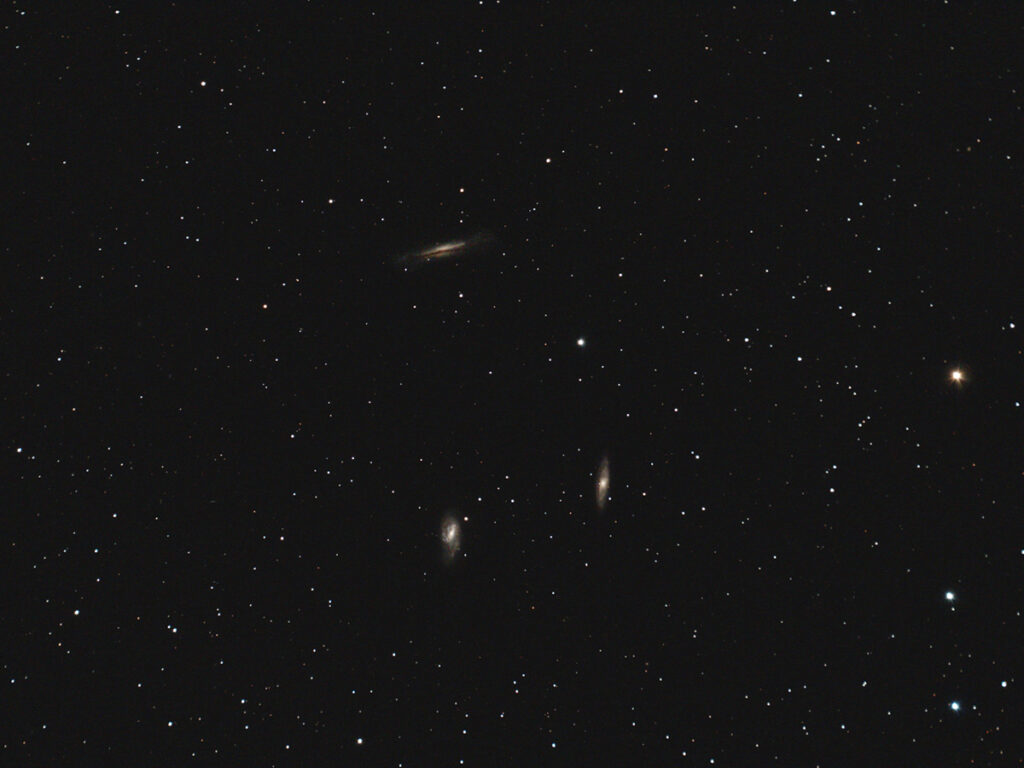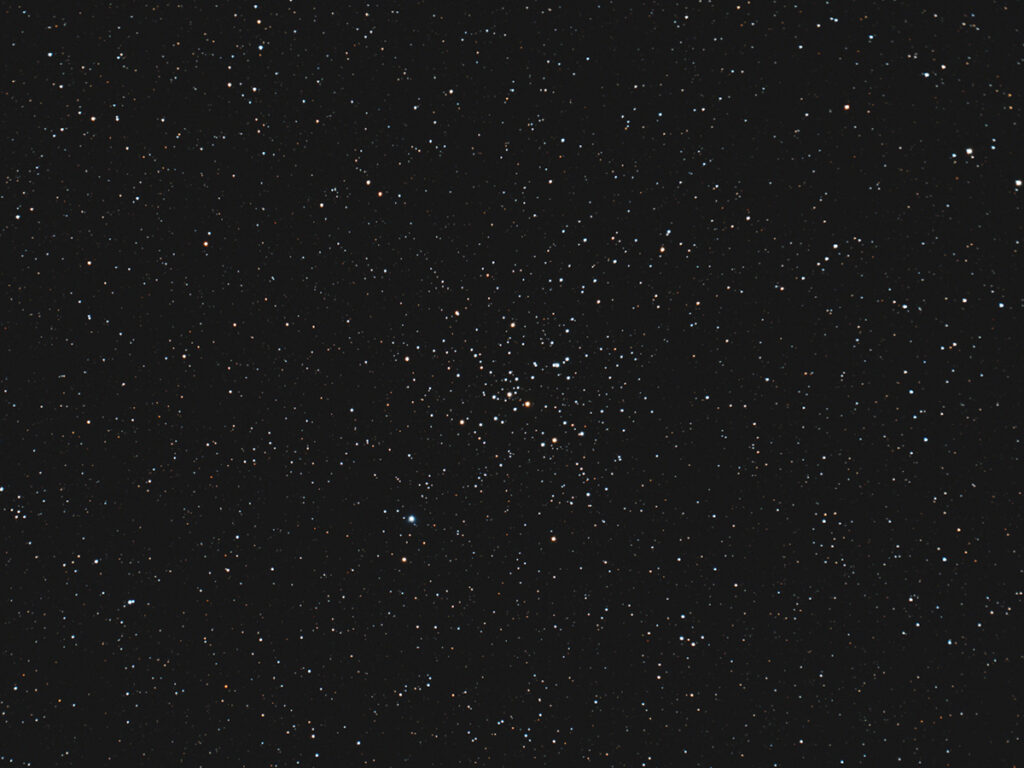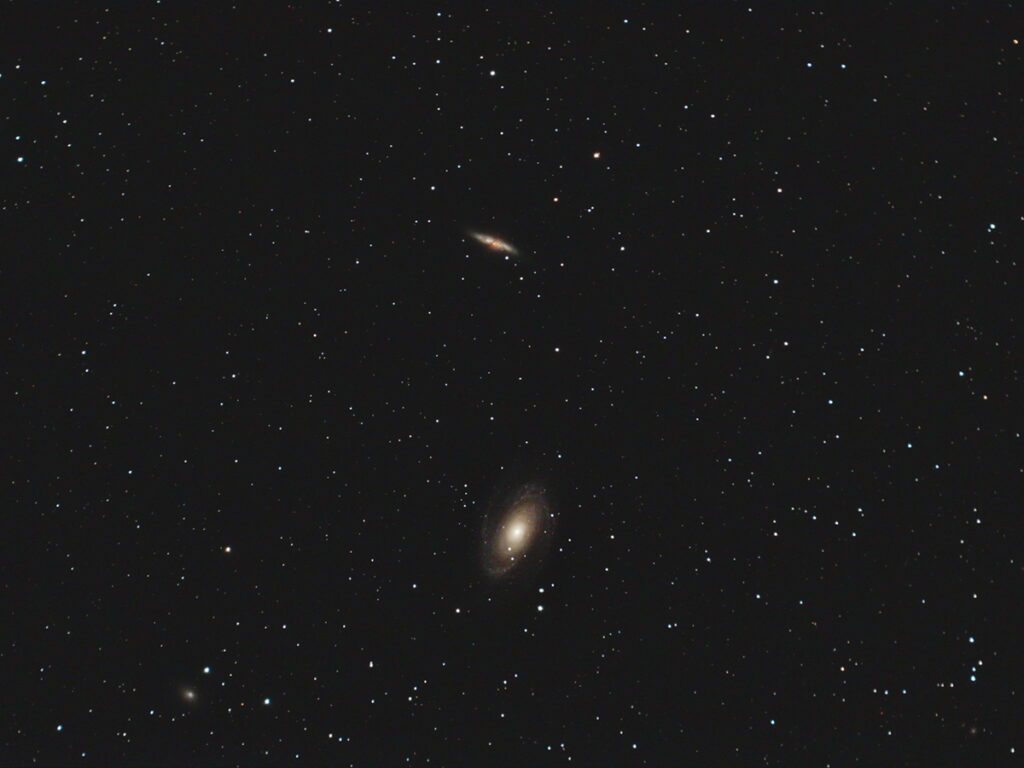
Telescope: Meade SN6 Comet Tracker at f/3.6, Orion Atlas EQ-G
Camera: Full Spectrum Modified Nikon D5300, Baader Mk III MPCC
Filter: Orion Imaging Skyglow Filter
Guide scope: Orion 50mm, ZWO ASI120MM mini
Exposure: 70x60sec, ISO 200, saved as RAW
Darks: Internal (Long Exposure Noise Reduction On)
Flats: 32×1/10sec, Tee shirt flats taken at dusk
Average Light Pollution: Red zone, Bortle 8, poor transparency
Lensed Sky Quality Meter: 18.4 mag/arc-sec^2
Stacking: Mean with a 2-sigma clip.
White Balance: Nebulosity Automatic
Software: Backyard Nikon, Deep Sky Stacker, Nebulosity, Photoshop
This is M13, the Great Cluster in Hercules. Also in the picture is the galaxy NGC 6207 (Mv 11.6) in the upper left corner, and about halfway between NGC 6207 and M13 is the tiny galaxy IC 4617 (Mv 15.2). Globular clusters are relics of the ancient universe and M13 is no exception with an estimated age of 12 billion years. Their great age is an indication of their unusual stability. One consequence of this stability is that any heavy elements that their stars have made remains buried in their cores and the cluster itself has little, if any, interstellar dust. M13 is one of the few globular clusters with a dust-like feature that can be seen as a dark lane extending to the lower left of the core. It is possible that this dust lane is not really associated with M13, but instead is an independent object that just happens to be in front of the cluster.
M13 is currently a morning object, rising in the northeast after midnight and is high overhead at dawn.









Recent Comments